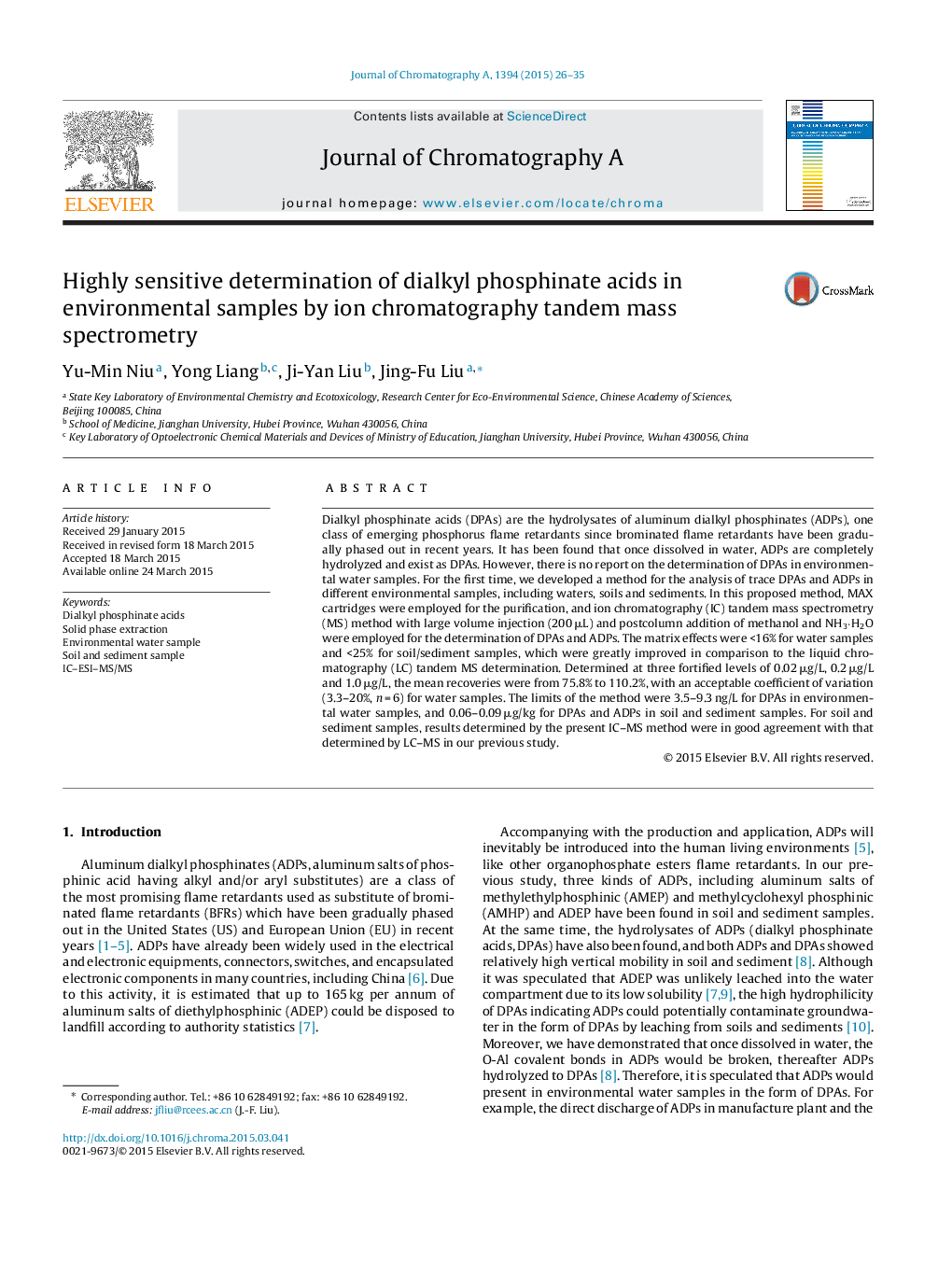| Article ID | Journal | Published Year | Pages | File Type |
|---|---|---|---|---|
| 1198868 | Journal of Chromatography A | 2015 | 10 Pages |
•First report on the determination of dialkyl phosphinate acids in waters.•Identification and quantification by ion chromatography tandem mass spectrometry.•SPE cleanup and large volume sample injection offer high sensitivity.•Applicable for various environmental samples with high sensitivity.
Dialkyl phosphinate acids (DPAs) are the hydrolysates of aluminum dialkyl phosphinates (ADPs), one class of emerging phosphorus flame retardants since brominated flame retardants have been gradually phased out in recent years. It has been found that once dissolved in water, ADPs are completely hydrolyzed and exist as DPAs. However, there is no report on the determination of DPAs in environmental water samples. For the first time, we developed a method for the analysis of trace DPAs and ADPs in different environmental samples, including waters, soils and sediments. In this proposed method, MAX cartridges were employed for the purification, and ion chromatography (IC) tandem mass spectrometry (MS) method with large volume injection (200 μL) and postcolumn addition of methanol and NH3·H2O were employed for the determination of DPAs and ADPs. The matrix effects were <16% for water samples and <25% for soil/sediment samples, which were greatly improved in comparison to the liquid chromatography (LC) tandem MS determination. Determined at three fortified levels of 0.02 μg/L, 0.2 μg/L and 1.0 μg/L, the mean recoveries were from 75.8% to 110.2%, with an acceptable coefficient of variation (3.3–20%, n = 6) for water samples. The limits of the method were 3.5–9.3 ng/L for DPAs in environmental water samples, and 0.06–0.09 μg/kg for DPAs and ADPs in soil and sediment samples. For soil and sediment samples, results determined by the present IC–MS method were in good agreement with that determined by LC–MS in our previous study.
